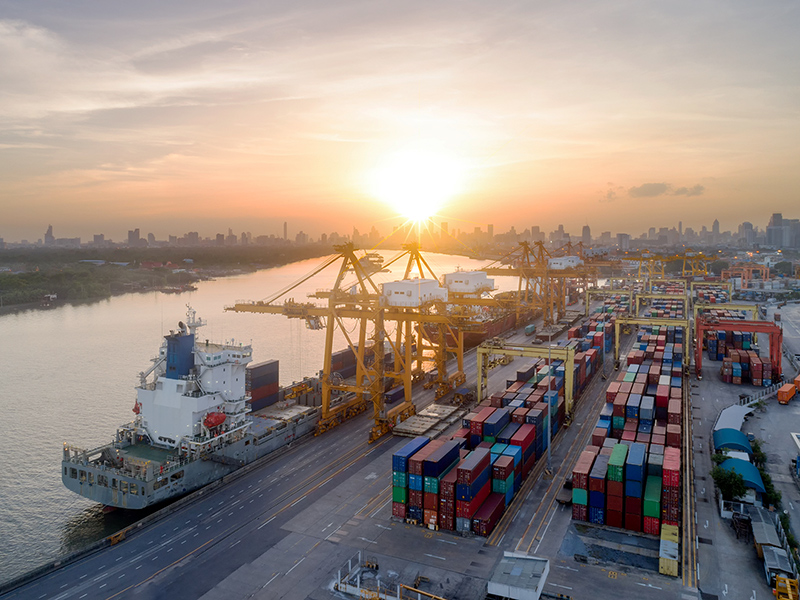
From youth activists marching in the streets to economic leaders in Davos, the world is calling for business to combat the climate crisis. Indeed, business plays a vital role in the effort to limit global warming to 1.5°C in line with the Paris Agreement targets. And business is making progress: to date, 769 companies with a combined market cap of over USD$10 trillion have committed to setting science-based targets (SBTs) to reduce their greenhouse gas (GHG) emissions.
Most companies that have set SBTs have a good understanding of their Scope 1 emissions, generated by their own operations, as well as their Scope 2 emissions, generated from the energy sources that power their operations. Some companies have already taken significant steps to reduce Scope 1 and 2 emissions, with commitments such as using 100 percent renewable energy to power their operations. However, the greatest proportion of a company’s GHG emissions fall within Scope 3, their value chain. According to CDP, an environmental disclosure non-profit, a company’s supply chain emissions are on average 5.5 times larger than its Scope 1 and 2 emissions.
Some companies have already ventured into reducing their Scope 3 emissions: Walmart has engaged Tier 1 suppliers through Project Gigaton, HPE’s supplier collaboration program seeks to avoid 100 million tons of emissions, and L’Oréal's carbon balanced ambition aims to counterbalance GHG emissions by generating carbon gains through the sustainable sourcing of raw materials. Learning from these pioneering programs, it is now time to dramatically speed up climate action across value chains and deliver science-based GHG reductions for the Decisive Decade ahead.
Still, addressing Scope 3 emissions comes with several challenges in the context of fast-moving, globalized commodities markets regulated with price volatility: lack of transparency or knowledge of the supply chain, lack of direct connections with the next tier of suppliers, and reduced leverage to influence action.
The opportunity is undeniable: a company's value chain contains its largest GHG reduction potential, and value chain decarbonization is a necessity to achieve SBTs.
Companies dedicated to climate action still have a long way to go, even after they have set SBTs. Achieving their goals to limit global warming to 1.5°C requires taking on Scope 3 emission reductions—unexplored territory for most. And yet the opportunity is undeniable: a company's value chain contains its largest GHG reduction potential, and value chain decarbonization is a necessity to achieve SBTs. For companies that are pursuing SBTs, we see the following three steps as key to achieving value chain emissions reductions.
1. Focus on GHG Reduction Potential
Businesses aiming to reduce their Scope 3 emissions should start with a thorough understanding of their value chains and identify the areas with the greatest potential to deliver GHG reductions. This is an essential step—the greatest GHG reduction potential may not be the most obvious. Simply because a value chain may be the largest (e.g. by spend) or be the most GHG intensive (e.g. large agricultural commodities such as cotton for apparel, in some specific location), these may not have the most potential for reduction since they might already be optimized.
Overlooking the supply chains with the most emissions reduction potential might result in time and resources wasted. Companies need to begin with an understanding of which supply chains can or can’t be further optimized and concentrate on achieving decreasing emissions in the areas with the most potential for reductions.
2. Use a “Reverse Sourcing” Approach
A traditional sourcing approach calls for engaging Tier 1 suppliers, then working with them to engage their supply chains. This approach, while systematic, doesn’t prioritize the specific value chain players with the greatest emissions reduction potential.
To most effectively reduce GHG emissions, companies can apply a ‘reverse sourcing’ approach. This means targeting GHG reduction solutions at the root, rather than focusing on Tier 1 suppliers as an entry point. Depending on value chain specificities, businesses can identify value chain players, such as smallholder producers, upstream producers, manufacturers or others with the largest GHG reduction potential, beyond Tier 1. And therefore, target and implement actions to significantly reduce GHG emissions at that level.
Once a company has identified such an area with significant GHG reduction potential—for example, smallholder producers of raw materials—then, the company will have to connect relevant partners at every stage of the value chain between that supply chain actor and the company itself. This will involve developing new, long-term sourcing partnerships, as well as new business models to ensure that adequate investments are made towards these low-emission processes and emissions reductions targets can be met.
This shift of mindset—away from a more traditional approach to reverse sourcing—allows business to identify an array of appropriate GHG reduction solutions in the value chain, from raw materials projects to product innovation.
3. Take Pilot Programs to Scale
By piloting the "reverse sourcing" approach, businesses will demonstrate the opportunities to achieve emissions reductions in their value chain. Further, the pilot will provide learnings and solutions demonstrating how working through value chains will help a company to achieve its SBT.
To effectively achieve their SBTs, businesses will need to scale up such pilot programs by engaging value chain actors more widely and operationalizing the right procurement processes. For value chains with overlapping suppliers, peer collaboration will be fundamental: by working together, businesses will be able to learn from successes of others, leverage the power of balance, and collectively address emissions in their respective value chains.
Mitigating climate change and decreasing emissions is a matter of urgency—and addressing Scope 3 emissions in company value chains presents a great opportunity. Through identifying the value chains with the greatest GHG reduction potential, applying a "reverse sourcing" approach, and engaging with peers and value chain partners to bring pilots to scale, businesses will be able to reinvent their models, achieve their science-based emission reductions, and thrive in the long term.
Leveraging this new approach is an opportunity to deliver significant emissions reductions in value chains. The BSR Climate and Supply Chain teams look forward to supporting businesses on this journey. To lean more about Scope 3 emissions reductions, please read our full report on this topic or connect with us.
Topics
Let’s talk about how BSR can help you to transform your business and achieve your sustainability goals.








